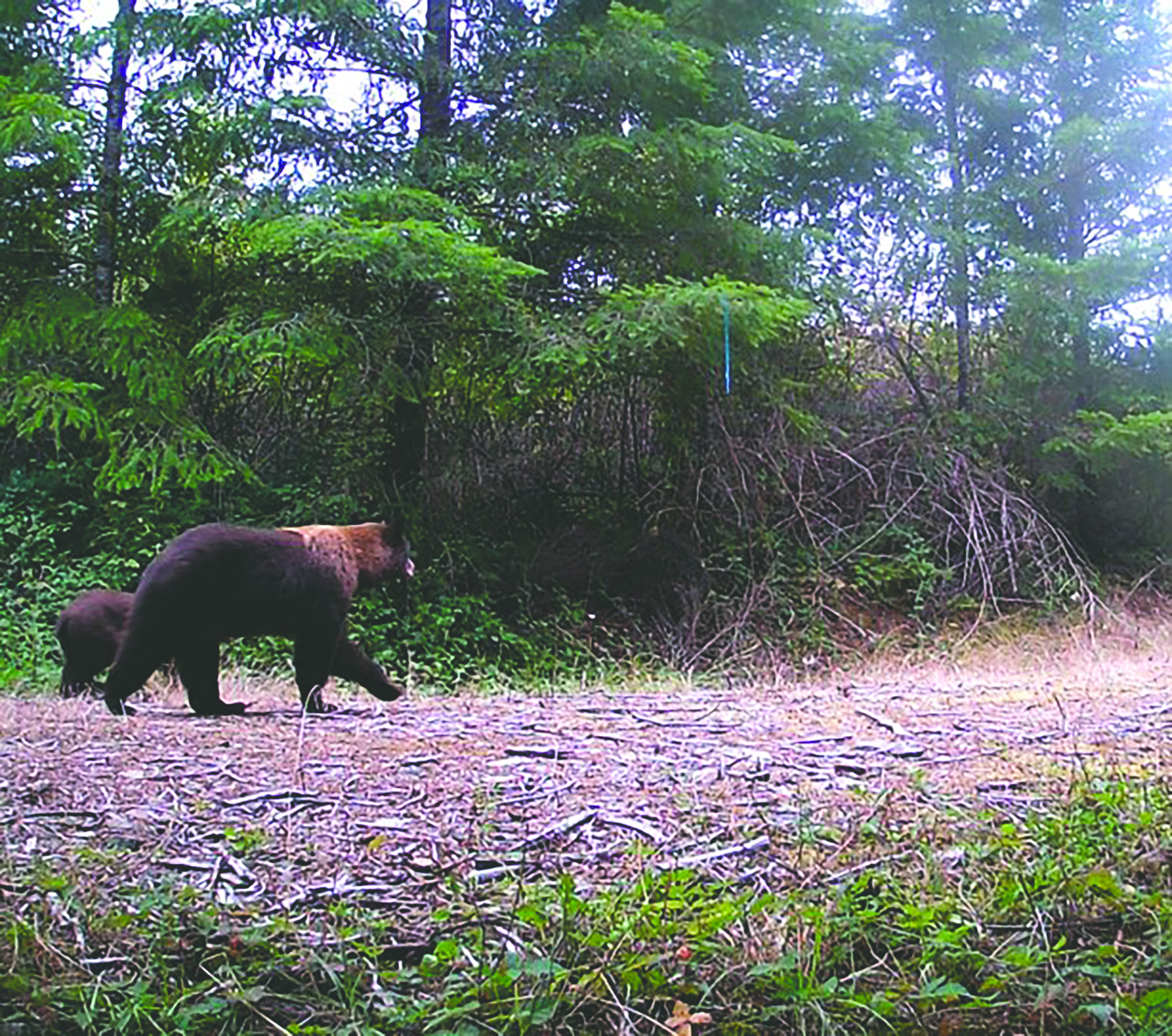By Clackamas Soil & Water District
The Mountain Times
Wildlife is an important part of a healthy forest. Those who have spent time in a forest know the excitement of catching a glimpse of a bobcat or have enjoyed the peaceful sounds of songbirds and croaking frogs. Others cast a line in a cool stream hoping to catch “the big one.”
To make your forest more wildlife-friendly, consider the following basic requirements: food, cover, space and water. Food should be available from multiple sources such as trees, shrubs, and small herbaceous plants. Berries, nuts, and seeds are good winter food sources in addition to green vegetation for grazing. Not all animals are vegetarian, so insects provide a source of protein. Of course, a healthy population of smaller wildlife feeds the larger meat-eating predators.
Shelter is also a requirement for nesting and protection of young animals. The needs range from tree cavities and tall grass to evergreen and broadleaf trees and brush piles or downed logs. These nesting areas may also provide food, such as insects in a log or under the bark of a tree. It could be a wildlife bed and breakfast!
If a tree dies or comes down in your forest, consider leaving it. Logs provide shelter for salamanders and chipmunks. Leaving a snag, or standing dead tree, provides perches for raptors in addition to homes for other birds. Snags provide homes for cavity nesters. However, consult a professional if you suspect downed or dying trees may be due to a disease or insect problem.
Depending on the type of tree and the location, wildlife such as owls, woodpeckers and squirrels use cavities in live and dead trees (snags) for nesting. Large woodpeckers (pileated woodpeckers and flickers) can excavate cavities in live trees for nesting and roosting. These cavities may provide necessary homes for wildlife that cannot create cavities on their own. If located near water, wood ducks and hooded mergansers will also make their homes in cavities. When the bark is loose, bark cavities provide a perfect place for bats to make their home. Be safe and evaluate if a tree on a well-used area or path is safe to leave standing.
For ground-loving animals, brush piles provide all the comforts of home. These include naturally downed logs and dead bushes or piles created by humans. A human-made design may utilize logs laid parallel and then covered with logs stacked perpendicularly to allow easier access. Place the brush on top to provide cover. These shelters are particularly valuable when overhead cover is sparse. Piles of stones also provide a habitat that is especially important for snakes and lizards. Other designs are a combination of stone, brush, and logs. Remember to place the largest material on the bottom for a sturdy pile.
Space required by wildlife varies greatly. A small woodlot is perfect for certain wildlife, while others may need corridors connecting larger areas. Additionally, openings in the forest may be necessary to provide food and nesting places for specific wildlife species. Tall grasses for hiding and nutritious herbaceous plants and shrubs are habitat requirements for deer, elk, quail and other ground birds.
Also think about vertical space. This means having multiple levels of vegetation such as a ground cover or shrub layer, and a layer with tall trees to provide the best habitat for a diverse range of wildlife.
Water is a critical need for all life. Some animals find all the water they need from dew and vegetation, but most wildlife populations rely on streams, lakes, wetlands and springs or seeps. Water sources that do not dry up in normal years may disappear with the recent droughts, making water hard to find. Protecting your wetlands and maintaining ground cover and shade along streams help to ensure wildlife has clean, cool water.
If available water is a problem on your property, you may consider installing a wildlife guzzler. These provide a reliable source of fresh water in areas that may dry up. Guzzlers have a rainwater collection apron that empties into a storage tank. Water travels by pipe to a trough to an access point, usually controlled by a float valve. Be sure to add a rough board or structure that is easy to grip to a trough as an escape for trapped animals.
When managing your woodland, consider the timing of activities such as cutting blackberries or thinning trees. Be aware that in the late winter and early summer specific wildlife species, especially birds, are nesting and raising their offspring in woodlands. The primary nesting season for some birds is between April 15 and July 31. However, raptors such as eagles, hawks, falcons and owls begin nesting as early as January. If possible, avoid mowing brush and cutting trees during the nesting season.
For more information on wildlife habitat enhancement, contact the Clackamas Soil and Water
Conservation District at 503-210-6000 or info@conservationdistrict.org.



